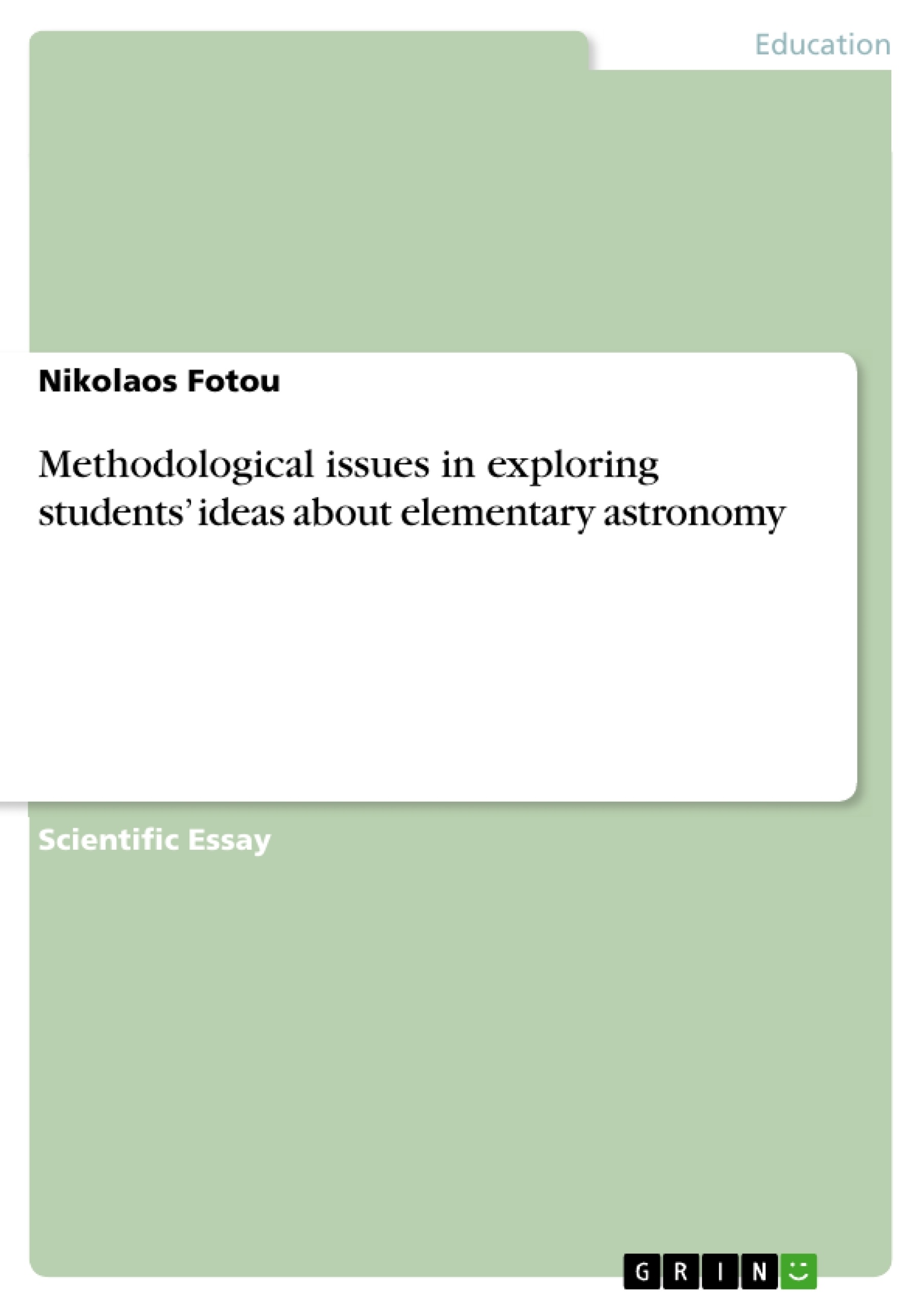This study investigates the methods and the questions or the tasks used for researching students’ ideas in the domain of elementary cosmology mostly in primary education. Astronomy seems to be fertile and attractive. This is mostly because, in many ways, the scientific perspective of the Earth and relative concepts is contrary to intuition or common-sense and contrary to appearance.
For instance, the Sun seems to move on the horizon during daylight hours, but actually it is the Earth that spins on its axes giving that impression. Young students’ developing understanding of the Earth and relative phenomena provides a fascinating natural experiment in the sources of young children's developing scientific knowledge. Most studies in this area involve children’s understanding of the shape of the Earth, the force of gravity and simple astronomical phenomena such as the day/night cycle.
In the last forty years, students’ understanding and ideas of scientific phenomena have been of considerable interest to researches in the field of science education. In Mouly’s (1978) words, the aim of a research is to promote progress and enable people to resolve their conflicts. In a similar vein, the purpose of the researches in science education is to ensure maturity and progression of education where lacks exist (Cohen and others, 2000). Nevertheless, in some cases the findings of such studies are not consistent and as a result there is disagreement about whether a lack exists or not. Several researchers have claimed that this inconsistency is related with the research approaches using different methods and reaching different conclusions.
Generally speaking, the word method concerns those techniques of eliciting answers to predetermined questions, measuring or recording information, describing a phenomenon and carrying out experiments (Cohen and others, 2000). In this study, the term will be referred to the range of approaches used in educational research to collect data and not for data analysis. This information has been used for interpretation, inference and explanation of children’s ideas. The methods for analysing the data will not be examined here, albeit there is a significant interrelationship between the data collected and the tools or approaches used for their interpretation. Therefore, even this not being the purpose of this study, some weaknesses of the methods used will be mentioned.
Inhaltsverzeichnis (Table of Contents)
- Questioning types: weaknesses and strengths
- Open-ended questioning
- Close choice questions
- Forced-choice methods
- Generative methods
Zielsetzung und Themenschwerpunkte (Objectives and Key Themes)
This study aims to investigate the methods and questioning techniques used in researching students' understanding of elementary cosmology in primary education. The study focuses on the challenges and strengths of different research approaches, particularly in the context of astronomy, where students' intuitive understanding often clashes with scientific explanations.
- The effectiveness of various questioning methods in eliciting students' ideas about astronomy.
- The strengths and weaknesses of qualitative and quantitative research approaches in this domain.
- The importance of considering the underlying theoretical framework when interpreting research findings.
- The challenges of data analysis and interpretation in qualitative research.
- The need for careful consideration of the potential biases introduced by different questioning techniques.
Zusammenfassung der Kapitel (Chapter Summaries)
- Introduction: This chapter establishes the context and purpose of the study, highlighting the importance of understanding students' ideas in the field of elementary cosmology. It also discusses the challenges and inconsistencies in existing research findings, which are attributed to the use of different research methods.
- Questioning types: weaknesses and strengths: This chapter delves into the two main methods used in researching students' ideas about astronomy: qualitative and quantitative approaches. It explores the advantages and disadvantages of open-ended questioning, a technique commonly used in qualitative research, highlighting its strengths in eliciting rich and nuanced data but also its challenges in data analysis and interpretation.
Schlüsselwörter (Keywords)
This study focuses on the methods and questioning techniques used in researching students' understanding of elementary cosmology. Key terms and concepts include qualitative and quantitative research, open-ended questioning, forced-choice methods, data analysis, and interpretation.
- Citation du texte
- Nikolaos Fotou (Auteur), 2011, Methodological issues in exploring students’ ideas about elementary astronomy, Munich, GRIN Verlag, https://www.grin.com/document/316701



